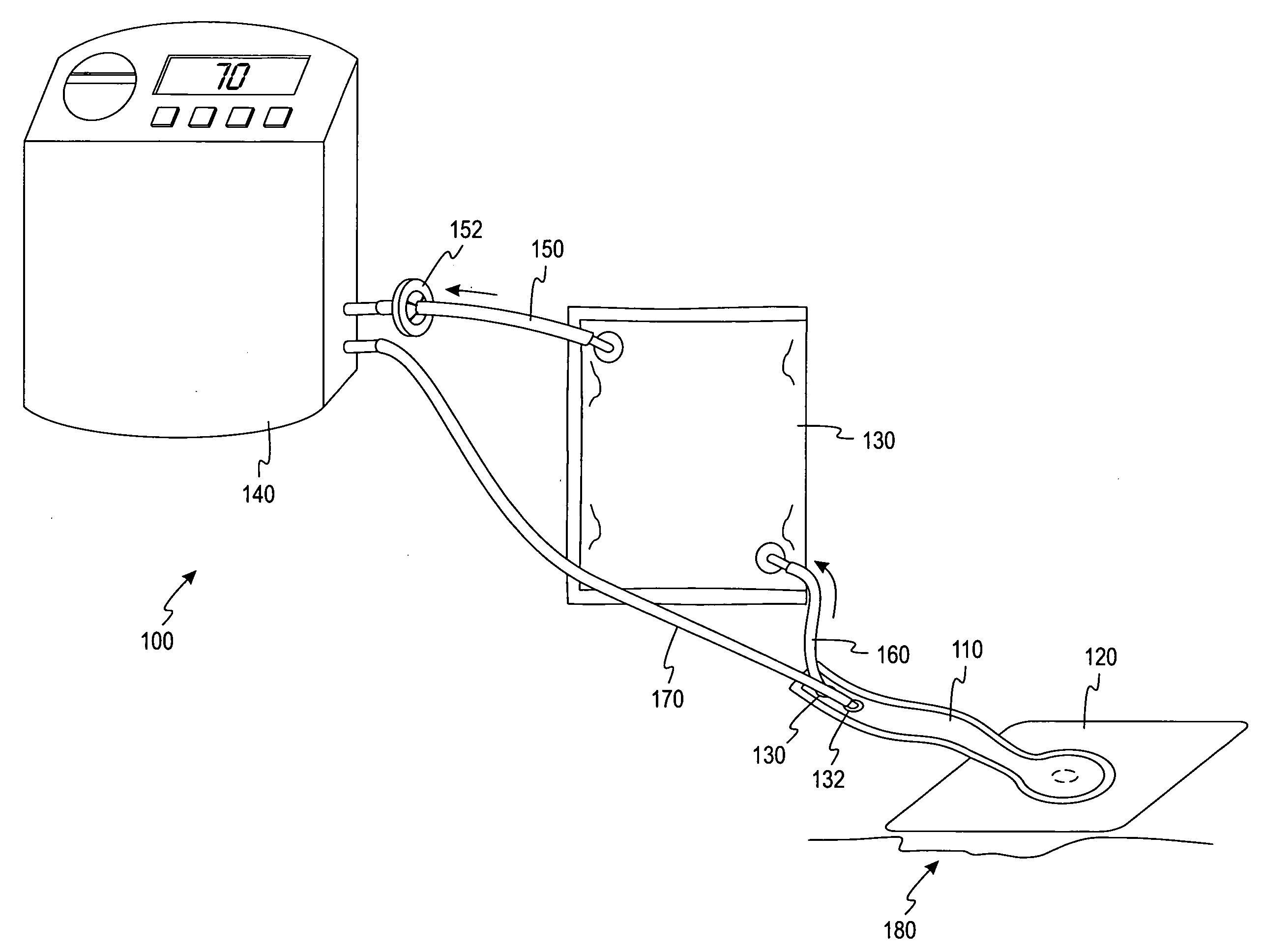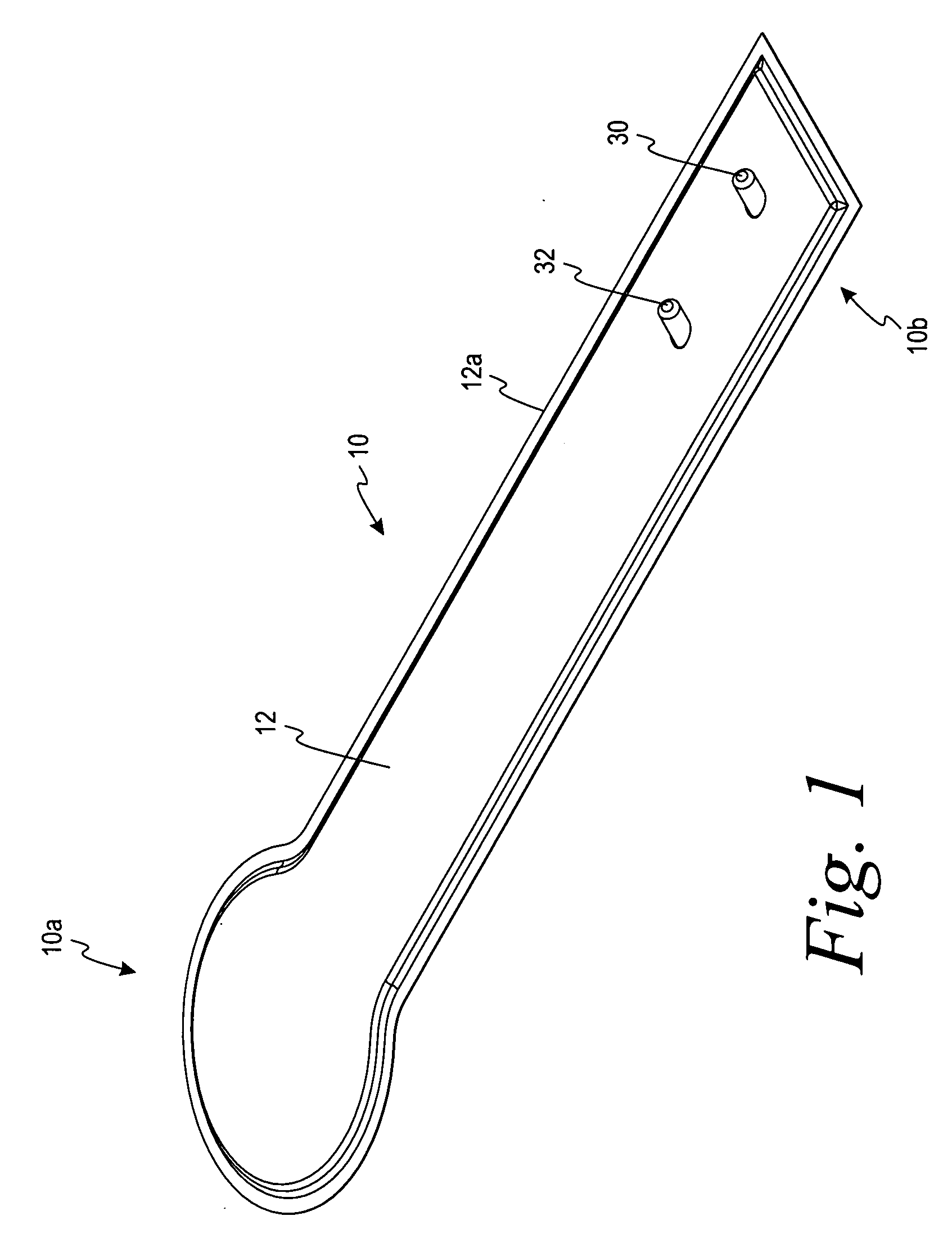Flat-hose assembly for wound drainage system
a technology of wound drainage and hoses, which is applied in the direction of flexible pipes, intravenous devices, other medical devices, etc., can solve the problems of creating pressure points on patients, wounds or other patient discomfort, and difficulty in making an airtight seal between the dressing and the tubing
- Summary
- Abstract
- Description
- Claims
- Application Information
AI Technical Summary
Problems solved by technology
Method used
Image
Examples
Embodiment Construction
[0015]As shown in FIGS. 1-4, a flat-hose assembly 10 for use in a wound drainage system is shown. The flat-hose assembly 10 has a top layer 12, a filter layer 14, and a bottom layer 16. The filter layer 14 is located between the top layer 12 and the bottom layer 16. The top layer 12 and the bottom layer 16 form a seal along a periphery 12a of the top layer 12 and a periphery 16a of the bottom layer 16 such that the filter layer 14 is disposed between the top layer 12 and the bottom layer 16. The filter layer 14 is enclosed within the top layer 12 and the bottom layer 16.
[0016]The flat-hose assembly 10 has a distal end 10a and a proximal end 10b. The distal end 10a is generally larger than the proximal end 10b of the flat-hose assembly 10. The distal end 10a is adapted to interact with a wound dressing to allow exudates from a wound to flow into the wound drainage system (see FIG. 5). The distal end 10a The proximal end 10b is adapted to allow exudates to flow away from the wound and...
PUM
 Login to View More
Login to View More Abstract
Description
Claims
Application Information
 Login to View More
Login to View More - R&D
- Intellectual Property
- Life Sciences
- Materials
- Tech Scout
- Unparalleled Data Quality
- Higher Quality Content
- 60% Fewer Hallucinations
Browse by: Latest US Patents, China's latest patents, Technical Efficacy Thesaurus, Application Domain, Technology Topic, Popular Technical Reports.
© 2025 PatSnap. All rights reserved.Legal|Privacy policy|Modern Slavery Act Transparency Statement|Sitemap|About US| Contact US: help@patsnap.com



